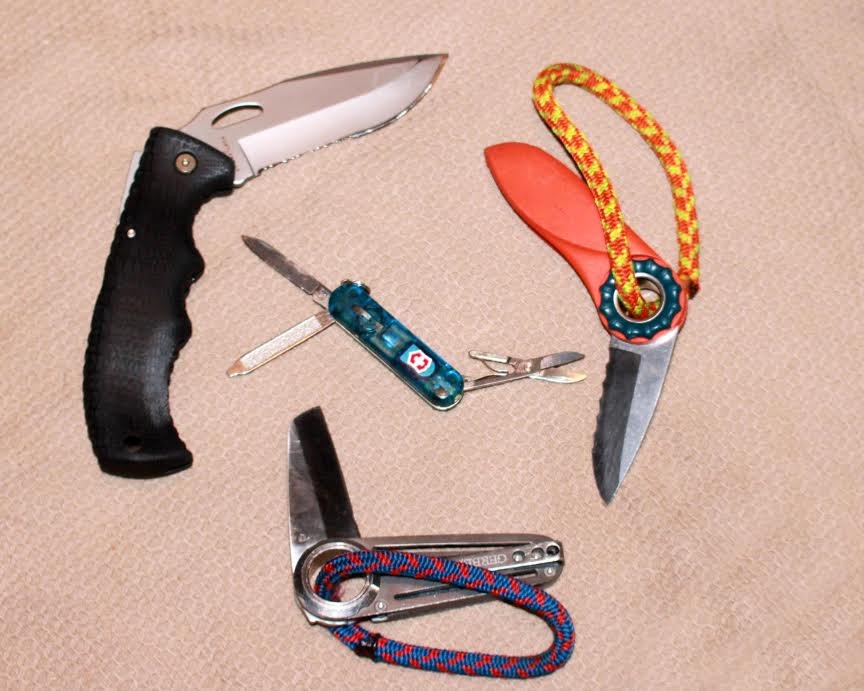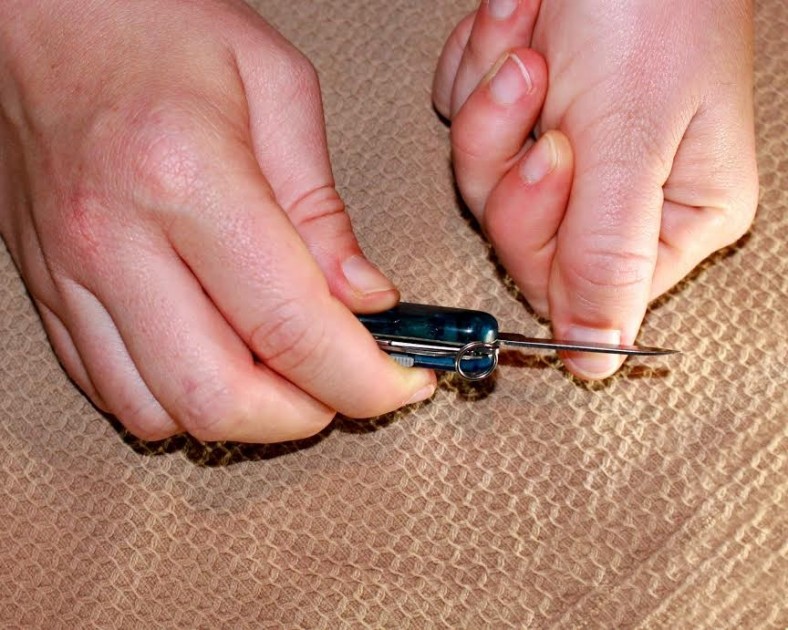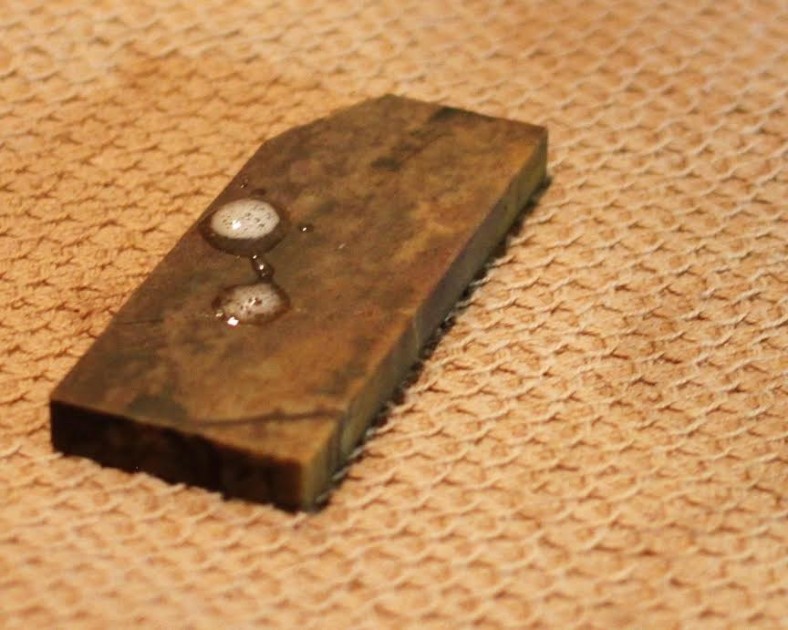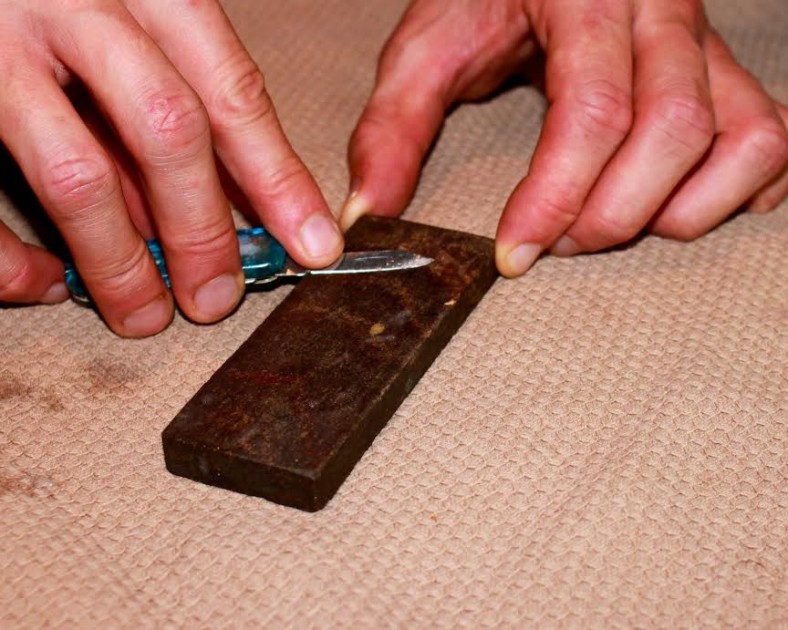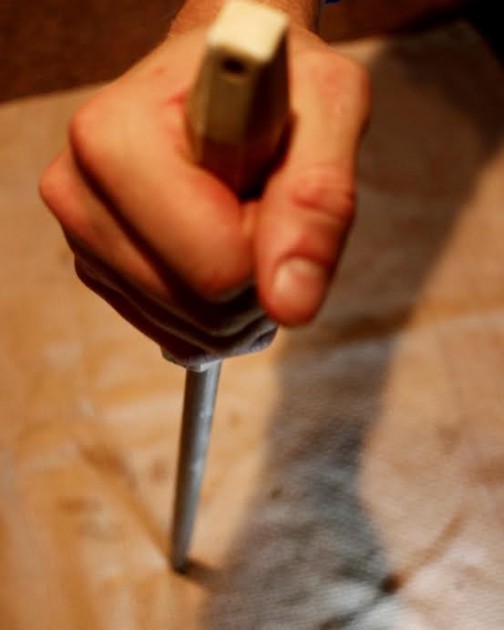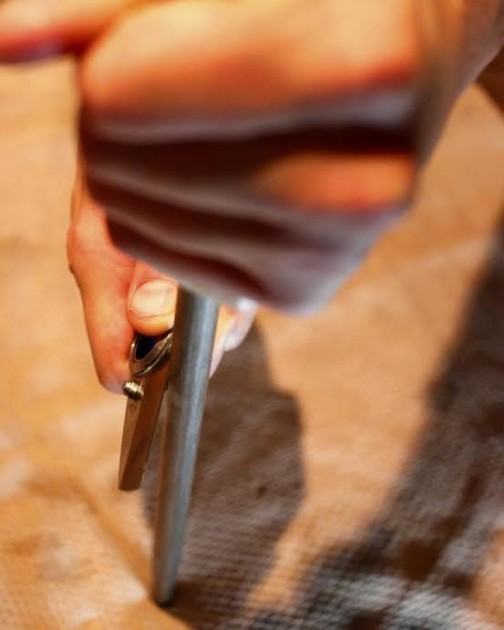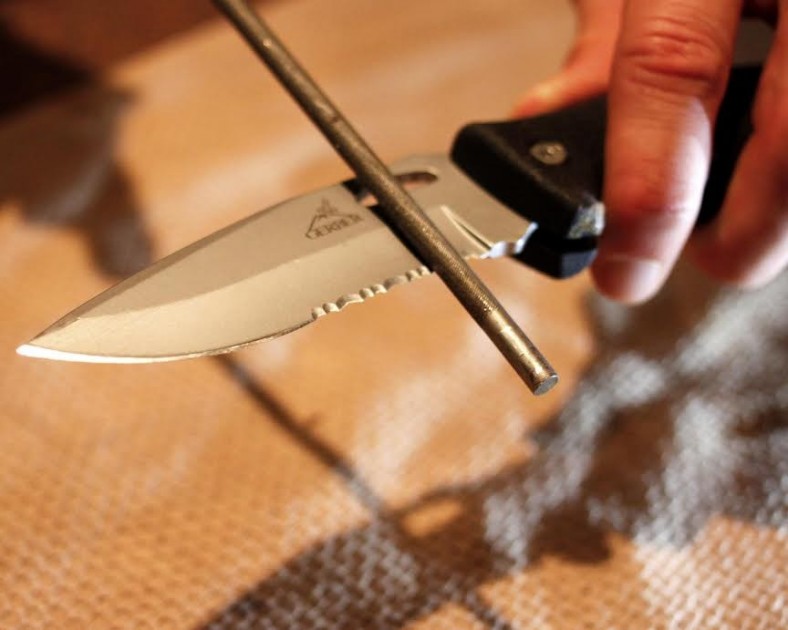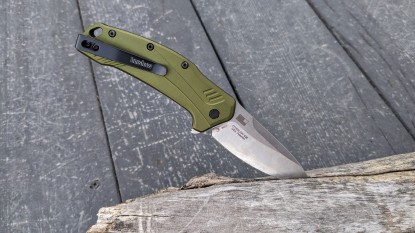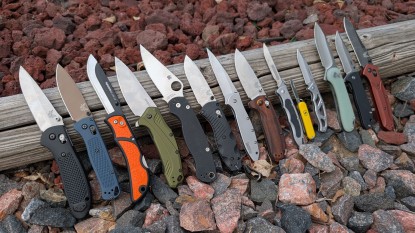A pocket knife can be an essential tool, but for that to happen you need to keep it sharp. Here are some important tips on making that happen.
Testing Dullness
Not only does a sharp knife works better than a dull one, it's much safer. Try sawing through a ripe tomato with a dull edge and keeping all your fingertips!
Testing dullness. Credit: Gentrye Houghton
- There are many ways to learn whether your knife has a dull edge — the easiest is noticing that your knife isn't working right, thus making your task much harder.
- You can also point the beam of a bright light such as your headlamp directly at the knife's edge; a dull edge will reflect the light.
- The thumbnail test is another method. Touch the blade edge to your nail, a blunt blade will slide easily while a sharp edge will catch.
Tools Required for Sharpening With a Stone
There are a vast number of sharpening methods and an equal number of tools. They range from a $14 basic kitchen knife sharpening tool to an over $300 Electric Wet Sharpener. We're going to keep things simple with a sharpening stone and a little lubricant.
Tools for sharpening. Credit: Gentrye Houghton
Sharpening Stones
: Sharpening stones, or whetstones, can be picked up at most any hardware store. They usually come with two sides: a pre-selected fine grit and rough grit. You can bump the expense by getting two different stones so that you can pick how coarse or how fine the grits. You will usually begin the sharpening process with the rough grit, then using the finer grit to hone the sharpness of the blade.
Forgot your stone?
You can improvise with a brick, flower pot, unglazed porcelain such as the bottom of your toilet tank lid, or unfinished ceramic, such as the rough ring found on the bottom of some plates, serving dishes or mugs. Emery boards for manicures also work well. Also, any item made of aluminum will work for final honing. That's because things made from aluminum have an outer layer of aluminum oxide, which is a nice abrasive that can be used for the final sharpening. Andrew Thorpe, the Media Relations Officer for the Scout Association in the United Kingdom, also recommends using porous rocks such as fine sandstone, or even water-smoothed rocks found around rivers.
Lubricant
: An anti-friction agent is also needed. While you are running your pocket knife over the stone, you are actually shaving a few particles off of it. An emollient helps keep the surface clean. Also, when you run the blade over the stone, heat can build from the friction created and too much heat can warp the blade. Lubricant reduces the heat, possibly saving your steel edge. Most knife experts suggest using mineral oil as a lubricant, but water, and even your own spit, will work.
Sharpening Your Pocket Knife With A Stone
Prep your stone. Credit: Gentrye Houghton
Prep Your Stone
: First, prep the coarse side of your sharpening stone. It should be plainly visible which side of the stone is the rougher one. You can also perform a scratch test with your fingernails to determine which side is rougher. Or, a coarse grit is more porous than the finer one and will soak up liquids faster.
- Now prep your stone with the lubricant. Sufficiently coat it, but there's no need to drench it. Use just enough to keep the surface clean as you run your blade over it about 20 times.
Position your knife at a correct angle
: The key is to keep the angle between your stone and knife consistent. For a pocket knife, shoot for between 10 and 15 degrees. Lay your blade flat on the stone and, keeping the knife's edge on the stone, raise the back of your knife to the desired angle.
- If you struggle to keep a constant angle as you run the blade over the stone, get a sharpening guide, which attaches to the knife and takes the guess work out of finding the right angle. Remember that sharpening guides do not work well with curved blades.
Glide each side of your knife
: With your angle set, make even strokes across the stone. There is debate as to whether you should bring the blade into or away from the stone. Both methods work; do whichever is comfortable. You may need to twist your knife slightly as you near the edge — you want to sharpen every bit of the blade, including the tip, in a single stroke.
- Run one side of the blade over the stone five or six times. If you are doing it right you will hear a nice clean stroke. If it sounds more like you're just scraping, then adjust the angle of your knife.
- After one side has been done five or six times, flip the blade over and do the same strokes in the opposite direction. Repeat the process about five or six times before moving to alternating strokes.
Glide, individually, each side of your knife. Credit: Gentrye Houghton
Use alternating strokes
: Sharpen one side, and then the other. Alternating strokes will evenly bevel your knife, the bevel being the sharp ground edge of the knife.
Repeat the process using the fine grit of your stone
: To refine the sharpness of your blade, use the finer grit stone, and repeat the whole process. Lubricate your sharpening stone and run each side of the blade over the stone five or six times. Finish the process with alternating strokes and then clean lubricant and any particles off your blade.
Alternative Method: Sharpening Your Blade With a Honing Rod
Honing rods are sometimes known as sharpening steels, and are extremely common in most commercial and kitchens. These steels are great for perfecting the edges of your blade, but you can get the same result with a sharpening stone.
- There are several types of rods. The most common is steel, but they can also be ceramic and diamonds. Diamond rods can create a smoother blade, but all three will do the job efficiently.
Sharpening your blade with a honing rod. Credit: Gentrye Houghton
Hold the rod by the handle with the tip firmly placed on a solid surface
: The rod should be held perfectly perpendicular on a hard surface. For your safety, you can also place a towel piece of cloth under the rod's tip to reduce slipping and save the horizontal surface from dents.
Once again, angle is paramount
: As with the sharping stone, the angle at which you hold your bevel edge is the key to the whole process. With the honing rod pocket knives should be held at an angle between 25 and 30 degrees.
- If you're struggling to find this angle, a clerk at your local knife or hardware store can possibly help.
Run one side of the knife's edge along the rod
: Don't push your blade with a lot of pressure; you'll want to swipe slowly and gently across the rod here, moving from the knife's handle to tip of the blade.
- How dull your knife is will determine how many strokes you need to use.
Run one side of the knife's edge along the rod. Credit: Gentrye Houghton
How to Sharpen a Pocket Knife with Serrated Edges?
What about serrated edges? Credit: Gentrye Houghton
Locate your knife's beveled edge
: Unlike a straight edged blade with an even bevel on each side, serrated knives heavily favor a more prominent bevel on one side. Only sharpen the side that is obviously beveled.
Sharpen each of the gullets
: You'll place the sharpening rod in each of the knife's grooves, or gullets, keeping the tool at a very shallow angle and using short strokes. Make sure that your tool sufficiently fills each of the knife's gullets, and you may need to adjust where your sharpening tool fits into the grooves.
- For your safety, the few short strokes you perform are always made away from you and the blade.
Sharpen each of the gullets. Credit: Gentrye Houghton
Remove the burrs
: If you're sharpening the blade properly, metal shavings, or burrs, will collect on the opposite side of the edge. To finish this process, clean off all the burrs you've accumulated.
- Run the back of your knife against some fine grit sandpaper or run the back of your serrated edge along the fine grit side of your stone.
Now that your trusty pocket knife is properly sharpened, you want to keep it clean. Check out our article on How to Clean A Pocket Knife.

